All products featured are independently chosen by us. However, SoundGuys may receive a commission on orders placed through its retail links. See our ethics statement.
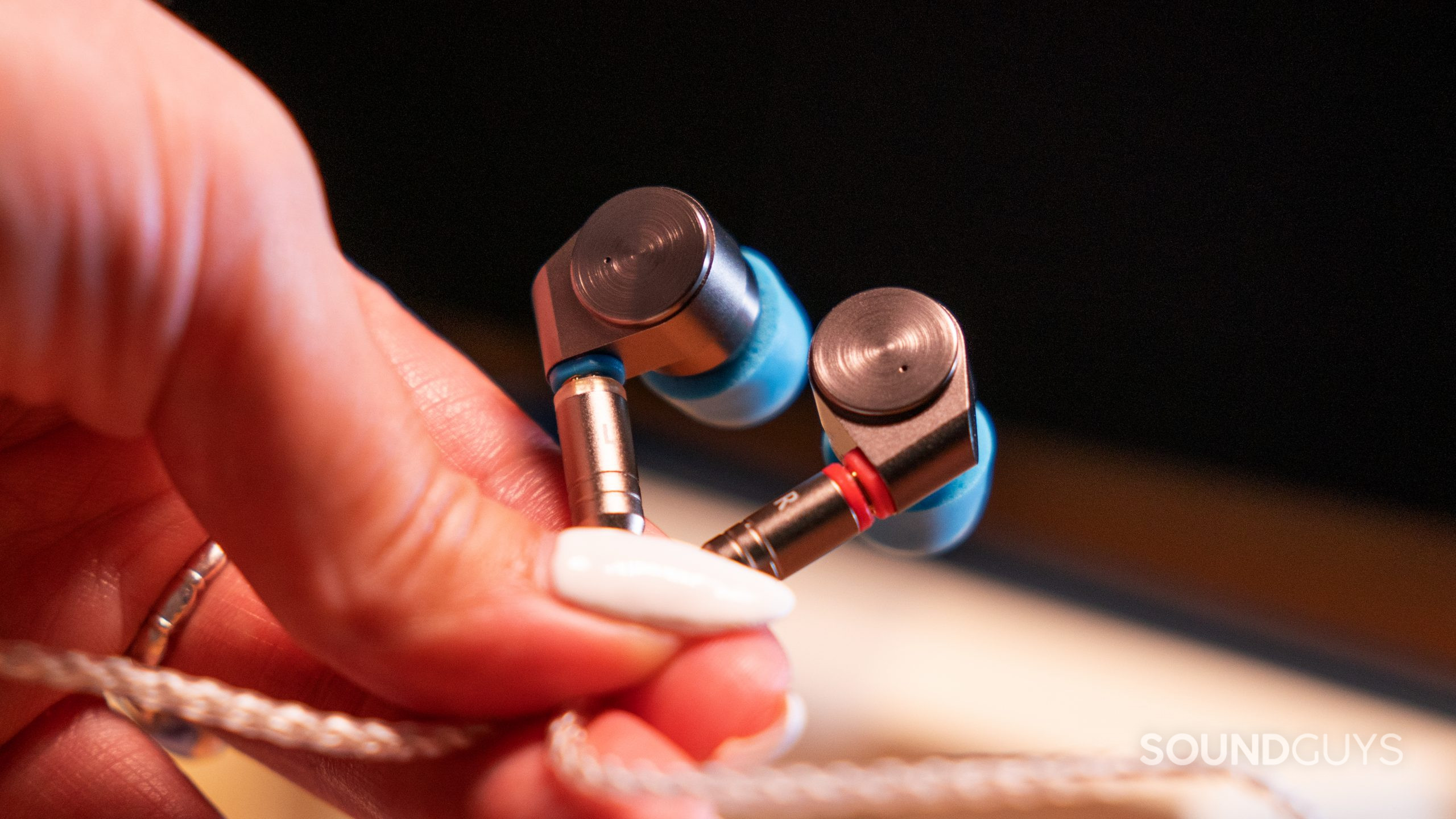
TIN HiFi T2 review
December 17, 2024
Linsoul TIN HiFi T2
You may have heard of the TIN HiFi wired earbuds in audiophile haunts online. The budget-friendly package received an upgrade, and like the Terminator, it’s back: the TIN HiFi T2. We put this silvery set of earbuds through its paces for two weeks to see if it’s worth a gamble, or if you ought to save your money for something else.
Editor’s note: this TIN HiFi T2 review was updated on December 17, 2024, to update our EQ suggestions.
Budget-conscious listeners interested in accurate audio reproduction will like the T2’s frequency response; relatedly, folks looking for a great set of studio style music-only earbuds will like this price and performance. No matter who you are, you can enjoy these wired earphones for not much scratch.
What’s it like to use the TIN HiFi T2?
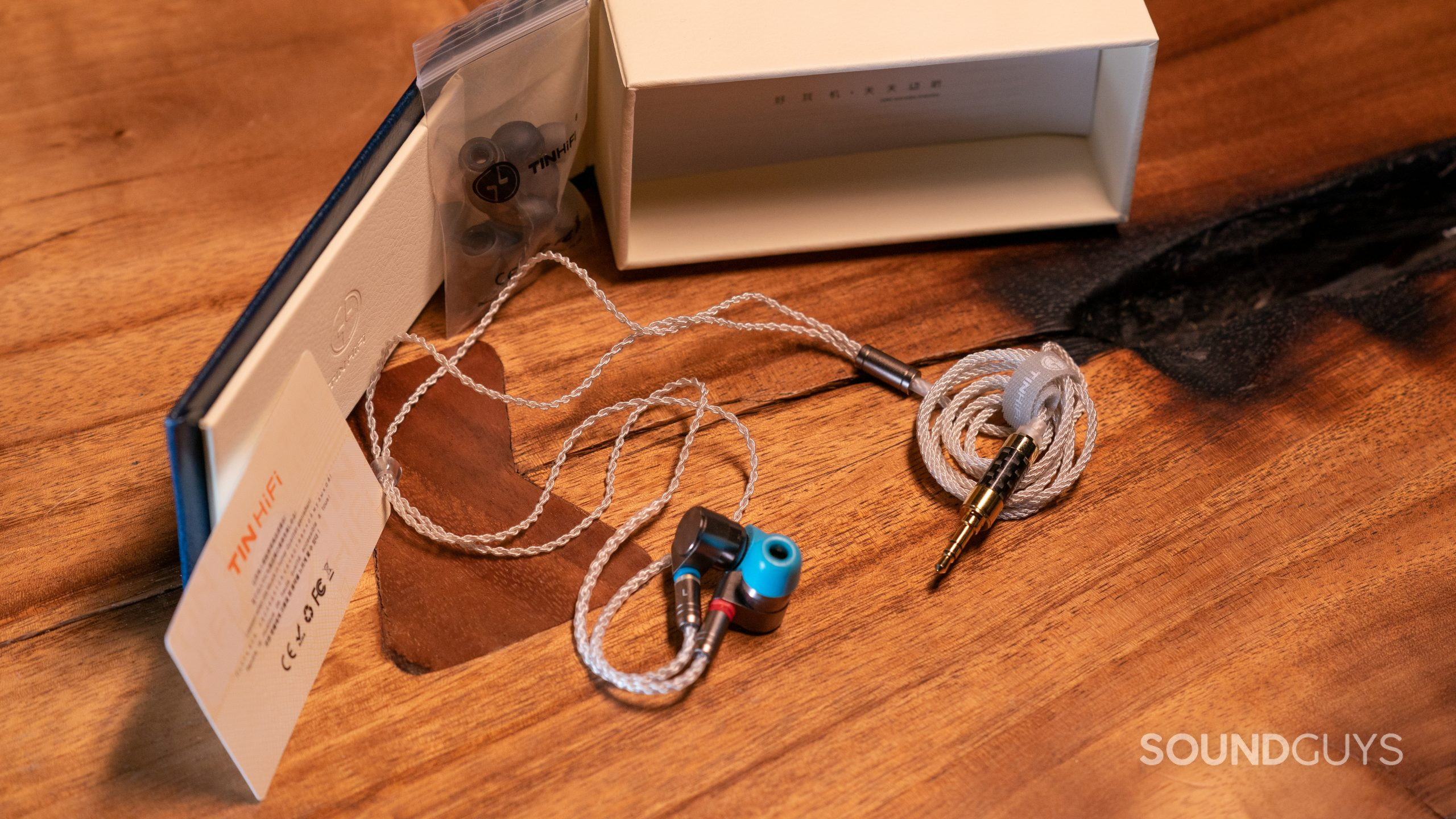
The TIN HiFi T2 does not feel cheap, but it looks a bit crafty. The hardy metal buds with 10mm dynamic drivers have removable MMCX braided cabling with a somewhat bendable section to wrap around your ear. It terminates with a 3.5mm jack in a big metal sleeve. Each bud has a stripe: blue (for left) and red (for right). The made-of-spare-parts aesthetic shows in the details, such as the mismatched shade of red on the cable next to the bud it connects to. While I like how the cable is of decent quality and resistant to tangles, it’s also resistant to manipulation which makes it difficult to get a solid around-the-ear fit.
You get eight sets of ear tips that vary in height and width (10mm to 14mm), most of which are silicone. The pre-installed option is a set of 13mm memory foam tips in light blue. While these are likely the most comfortable option, they don’t fit everyone. I settle for a 13mm-wide set of short silicone tips that have a lot more give than the memory foam ones. Despite trying out the various ear tips, the T2 fit is pretty clunky. Unlike the (pricey) Sennheiser IE 300, which offers a reasonably ergonomic shape, the T2 sticks out of my ears.
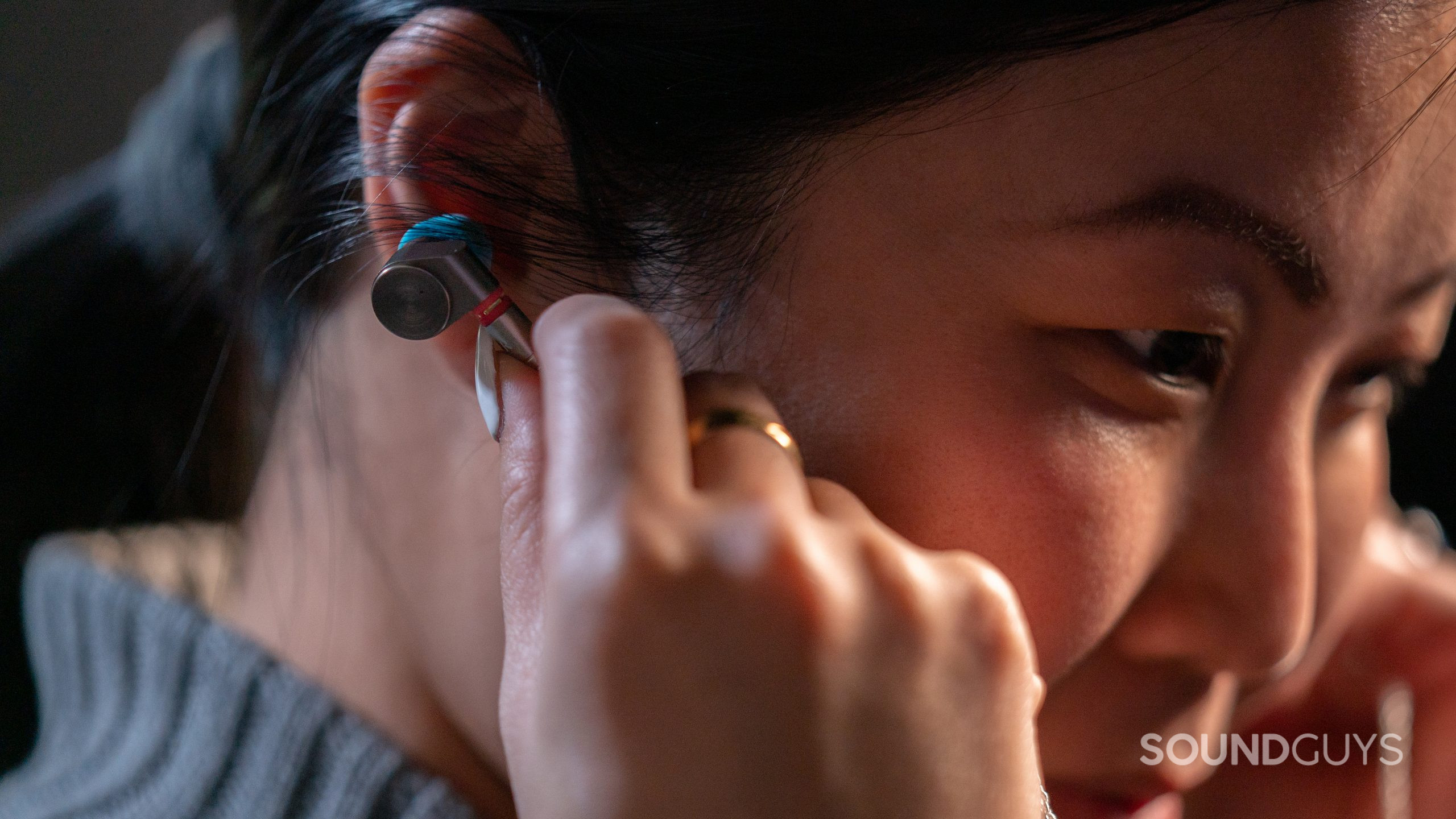
Trust me, you can try all sorts of techniques to get a good fit: wear it with the cables hanging straight down; wear it pointed upwards and wrapped over the ear. Worn with the cable hanging straight down, a combination of cable tension, heft of the buds, and minimal security regularly tug the buds out of my ears. Meanwhile, the cable does not readily bend around the back of the ear either.
However, once you find a workable fit, it feels okay. Conceivably, if you have a spare MMCX cable with effective memory wire, securing your fit can become vastly easier. Otherwise, this can up the cost. I choose to swap out the Linsoul cable for a better one, and it’s a major improvement. To hammer this home: if the cable was not removable it could be a deal breaker. Really, to be fair for $50 you’d be hard-pressed to find an equally good set of buds with a removable cable.
How do you connect the TIN HiFi T2?
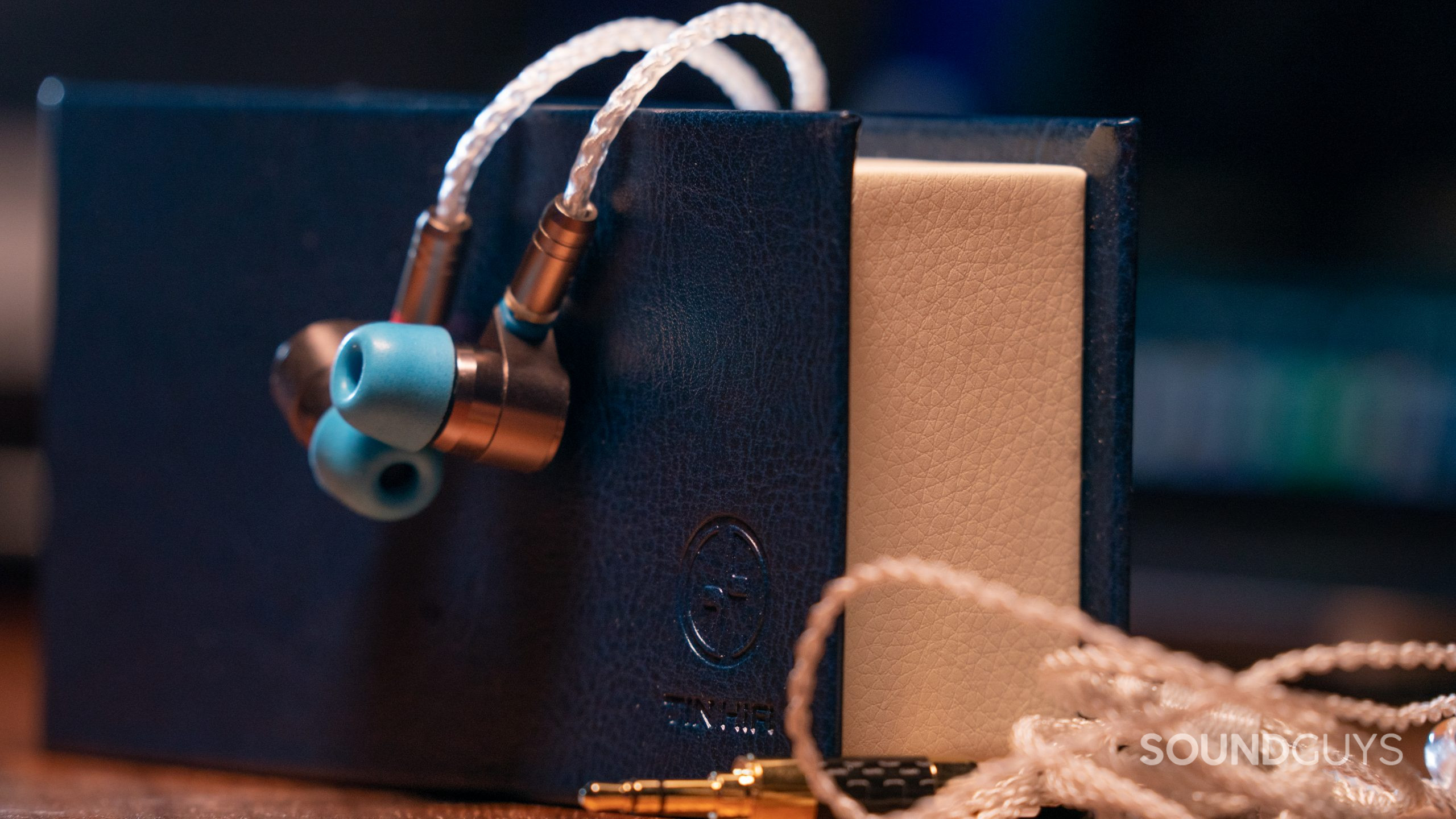
Once you obtain a good fit, just plug the 3.5mm cable into your device’s headphone jack. What if you don’t have a headphone jack on your phone? You’ll need a dongle. I experience zero issues when connected via dongle to my Android device. The upshot of the included removable cable is that if, for some reason, it busts or degrades you can replace it. This prolongs the life of the earphones, which saves you money. It’s also more eco-friendly. Guess what, it also makes sure your audio sounds as good as it can.
Does the TIN HiFi T2 have good isolation?
With earbuds, fit matters the most in determining how well acoustic isolation performs. In the case of buds like this with no active noise canceling (ANC), it means there’s no battery to drain, but also that low-frequency ambient noises will make it to your eardrums. Paired with the included foam ear tips the TIN HiFi T2 does an okay job of blocking out high pitch sounds over 40dB between 8 to 9kHz, and some midrange sounds too. This is a typical result for earbuds of this kind; it’s not class redefining, but adequate. Also while it’s nice to see that around 20kHz the T2 blocks over 45dB, don’t get too seduced, given there’s not much you normally hear in that frequency range anyway.
Loading chart ...
Trade the foam ear tips for the other supplied silicone options and the isolation has less potential to block sounds. The emphasis here is on “potential,” because if the foam ear tips do not sufficiently seal the ear, then a better fitTINg silicone ear tip could block noise better. You can always buy some third-party foam ear tips if the single included foam set does not fit.
We have a bevy of articles urging you to do all sorts of things to preserve your hearing. Blocking out external environmental noise means you won’t crank your audio up to cover up distractions. Good isolation means a lower volume, and not even because you’re trying to be conscientious about it, but because you won’t’ feel a need to turn things up when it’s all audible.
How does the TIN HiFi T2 sound?
Loading chart ...
The main appeal, besides the price, of the TIN HiFi T2 is its neutral-leaning frequency response. Listeners seeking to hear things without any dramatic overemphasis get a reasonable approximation of that here. It drops off in the sub-bass frequencies, but through bass and mids the buds produce a pretty straight line. You won’t get any ear piercing treble with the distinct under-emphasis (around 5dB or so) above 2kHz, except at 5kHz where it briefly realigns with our headphone preference curve, then rolls off steeply above 10kHz.
Listeners interested in hearing most of the exacting details of their audio will like the analytical nature of this frequency response. Be aware that for listening to speech, the slight under-emphasis between 2kHz to 5kHz means fricatives (th and f) are a little less noticeable, which can affect intelligibility.
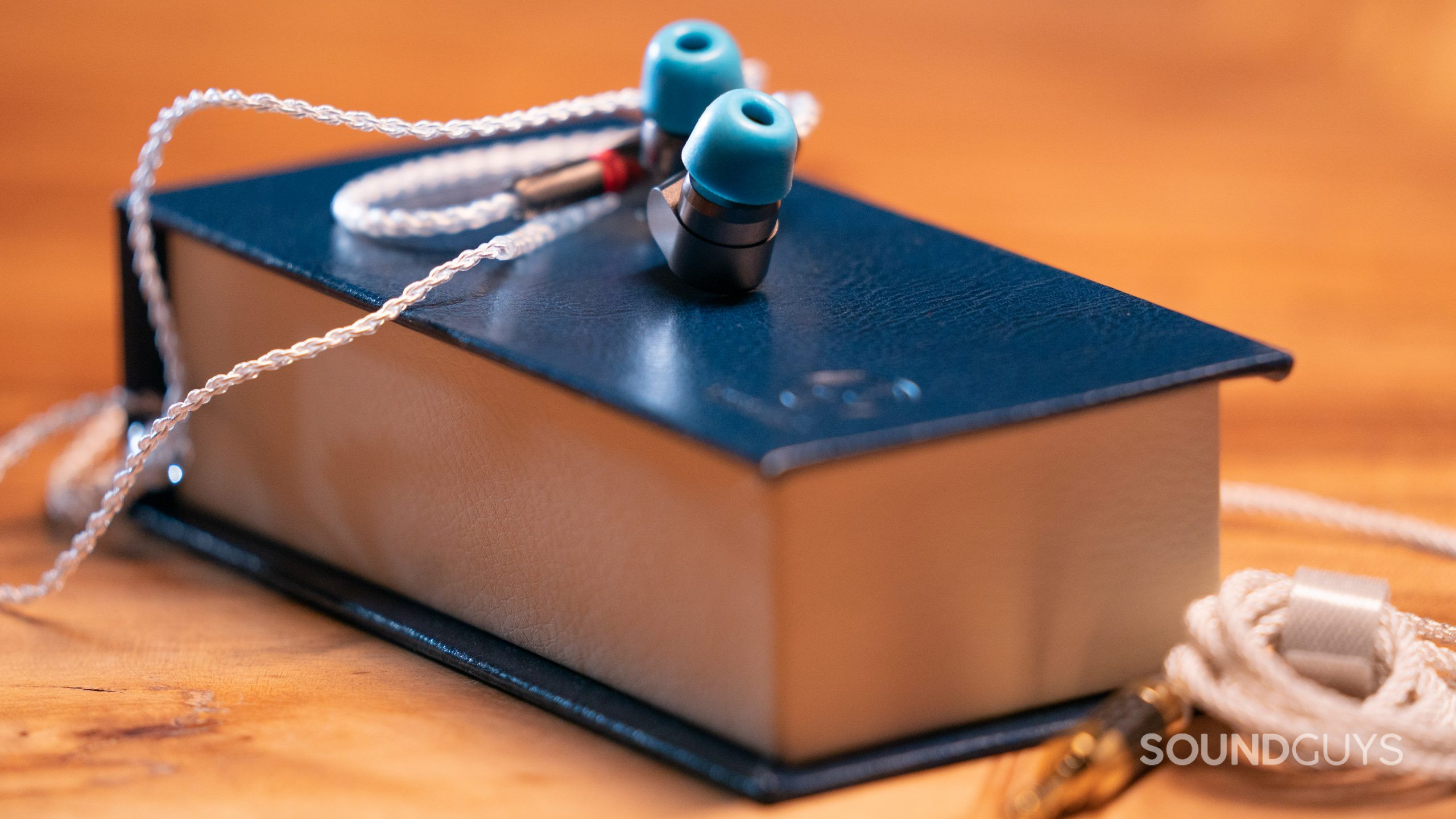
Those prioritizing casual listening, or desiring a more consumer-friendly sound, may find the T2 doesn’t have enough low end. You’ll still hear bass, but not with the same oomph in the lows as in many mass-market products. In addition, you may notice it sounds a little quiet in the 2kHz to 5kHz range. The restrained volume in the highs might not be preferable for vocals, high strings, and cymbals in busy mixes. Some listeners enjoy this kind of frequency response because it allows you to hear basically everything clearly.
Trying rock-infused soul song, Running by Baby Huey illustrates that the neutral frequency response of the TIN HiFi T2 won’t fix a poor mix, but will confirm a good one. Baby Huey’s soulful, raspy voice cuts through the midrange rhythm guitar, treble-leaning lead guitar, organ, horns, snare, and cymbals. Despite how the HiFi T2 under-emphasizes bass, the bass guitar has adequate volume. Overall, the buds do a good job with the song.
The HiFi T2 sounds better than many other pair of earbuds in this price range.
When I listen to the Spiritualized cover of The Troggs song, Anyway That You Want Me with the HiFi T2, the extended outro of the track sounds great. Here, absolutely every instrument in the mix is clearly identifiable. Drums, guitars, orchestral strings, and bass all blend together well for this crescendo. The downside is that the low-end roll off is really obvious in the lack of oomph rendering the drums uneven in volume. Jason Spaceman’s voice, guitars, snare, and cymbals get reproduced too quietly in the verses and choruses. More than likely, this is because those instruments can land quite a bit in that area of under-emphasis between 2kHz to 5kHz.
You just never get that ramped-up effect of tension released at the chorus, because of the neutrality of the sound, and because the mix of this song seems dependent on your headphones doing some of the work. From a more critical listening perspective, this highlights some of the track’s deficits and makes it clear that a better mix will sound consistently good on the TIN HiFi T2. At the same time, the T2 does you zero favors if your source material is patchy.
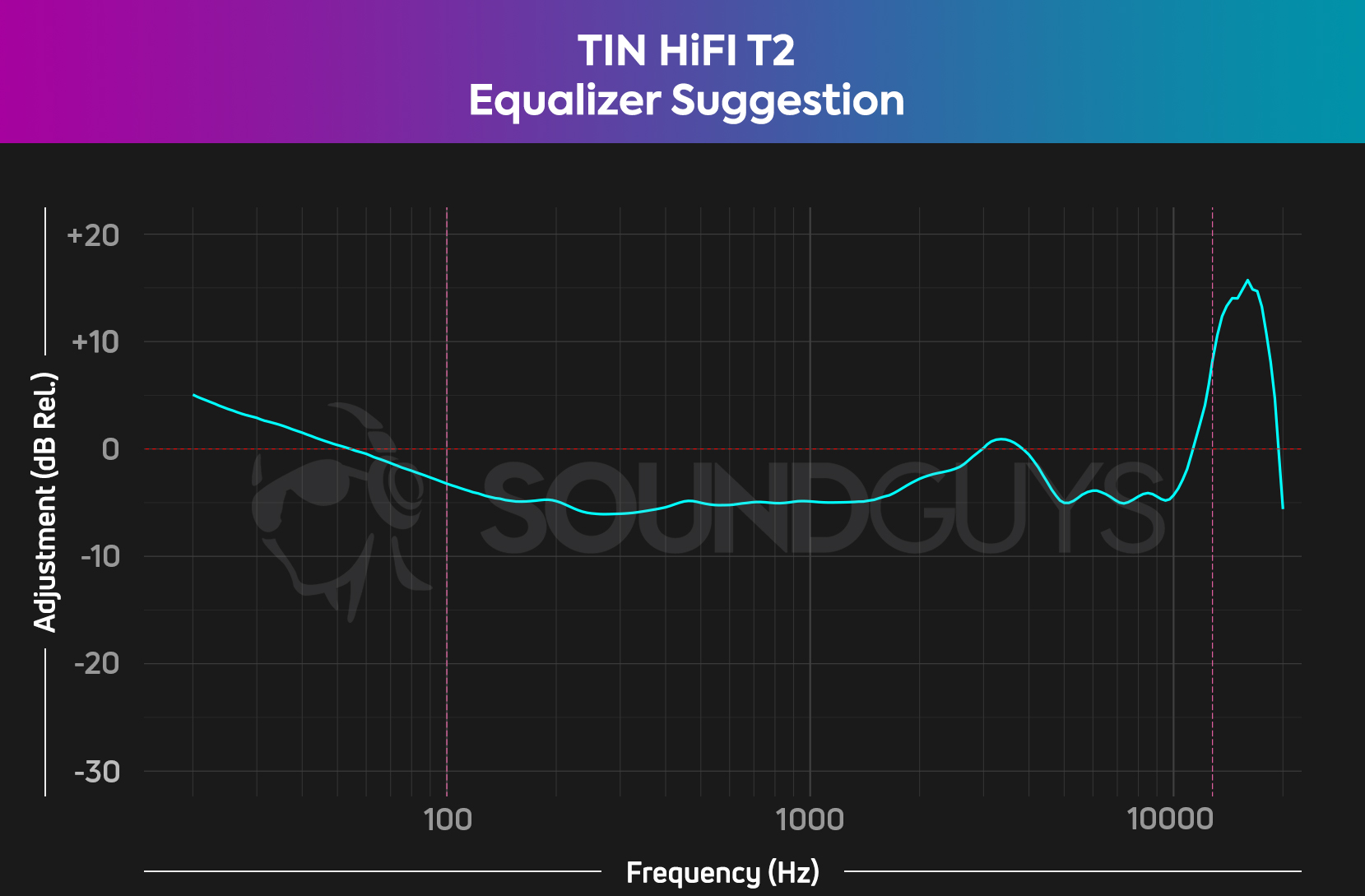
Some headphones are difficult to EQ, partly because they’re so wonky from the start, but it’s very easy to correct the TIN HiFi T2. Using your preferred equalizer, because this analog set has no software, you can dial in for a better sound. Consider shelving volume up above 10kHz to offset the early treble roll off, lightly increasing 3-4kHz (about 5dB). You’ll want to tone down everything from 100Hz to 2kHz a little bit to make the ear gain hump a little more audible, and perhaps 5-10kHz. Keep in mind the limitations of whatever equalizer you use. For example, some rudimentary EQ apps don’t adjust as high as 10kHz.
The mostly flat line of the suggested EQ illustrates the lack of intervention needed on the user’s behalf to get a good sound. By and large, that’s because the T2 already sounds good. Anecdotally, turning up the low end really helps in improving the audio reproduction.
Should you buy the TIN HiFi T2?
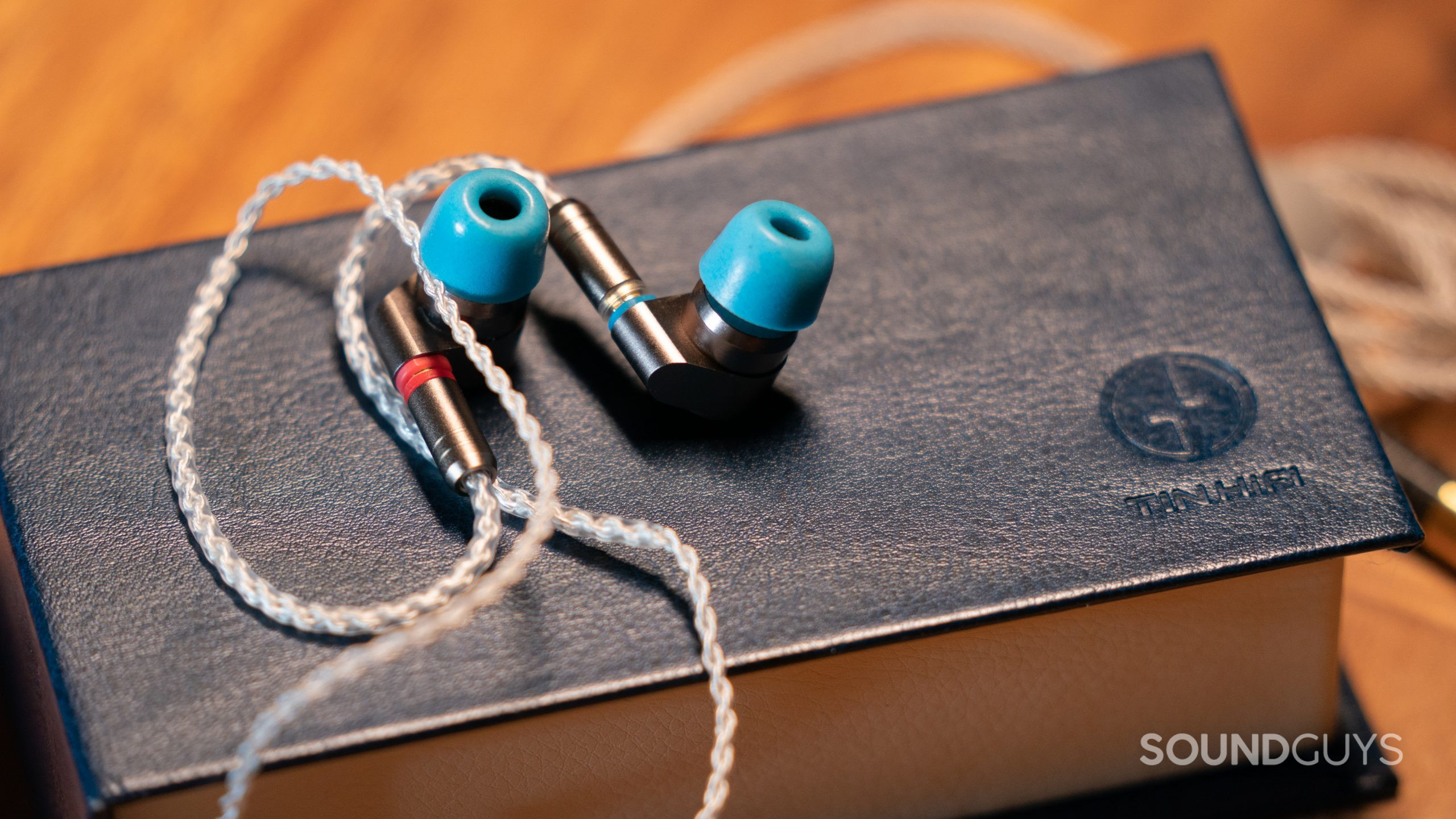
Yes, the hype is warranted. The TIN HiFi T2 represents one of those few instances where the hype about a product is backed up by the measurements. Maybe you’ll luck out and the T2 will fit you perfectly out of the box. The rest of us may want to trade in some of the parts for better ones: a more malleable MMCX cable, and more third-party foam ear tips. Sure, that ups the price from just under $50, but the frequency response is worth the upgrades on the TIN HiFi T2.
It seems worth pointing out that the TIN HiFi T2 has some rough edges as a complete product. You don’t get a carry pouch or case, and the bead holding together the cable — while endearing—is kind of cheap looking. The chunky shape of the metal housings does not contribute to a low-profile fit either.
With that said, the TIN HiFi T2 frequency response is better than some of the most expensive headphones out there. Bass heads, this one isn’t for you, but the rest of us can appreciate how well we can hear our music. So, should you really care that it does not ship with a carry pouch? No way, at $50 you can get crafty like Linsoul and repurpose something lying around the home, or grab one of these.

How does the TIN HiFi T2 compare to the KZ ZSN Pro X?
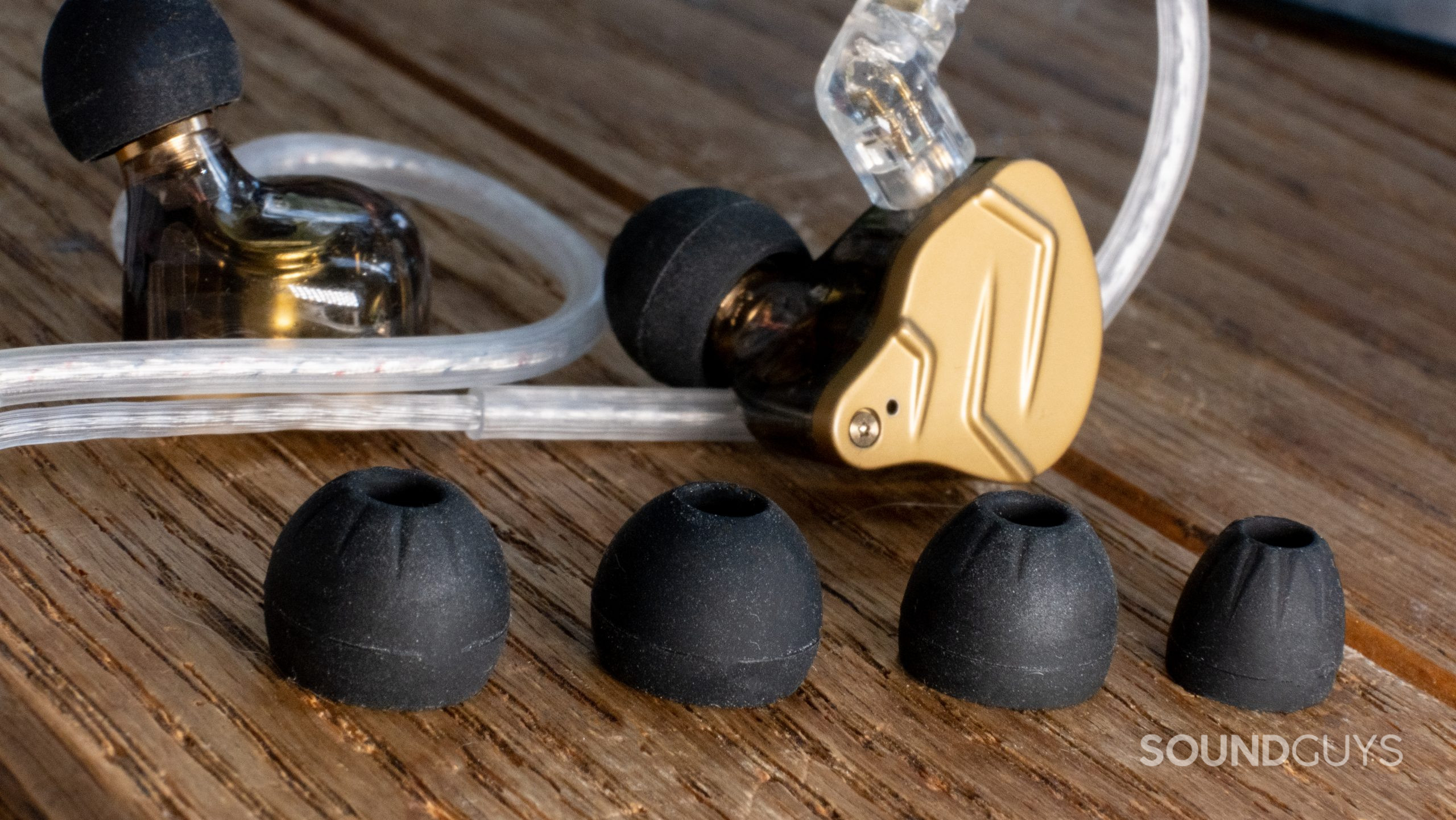
The KZ ZSN Pro X costs even less than the TIN HiFi T2 and manages to sound very good too. While the KZ earbuds don’t have the same neutral-leaning frequency as the TIN buds, you get an extremely palatable sound profile that nearly matches our consumer curve. This kind of sound is bound to satisfy more listeners across the board and requires very little adjustment. We also like how the ZSN Pro X uses a detachable 2-pin cable that wraps up and around the ears much like the TIN HiFi T2, but with the ZSN Pro X, the cabling is a bit more comfortable and includes an in-line mic/remote.
Loading chart ...
You don’t get any water resistance or durability rating but at least you can buy a cheap replacement if the cable breaks. We also like that you can turn the ZSN Pro X into a wireless affair when you purchase a KZ AZ09 Bluetooth module. Doing so, however, will bring it closer to the cost of TIN’s earphones. Both headsets are an absolute steal for the sound that they pump out but if money is tight, go with the KZ.


What should you get instead of the TIN HiFi T2?
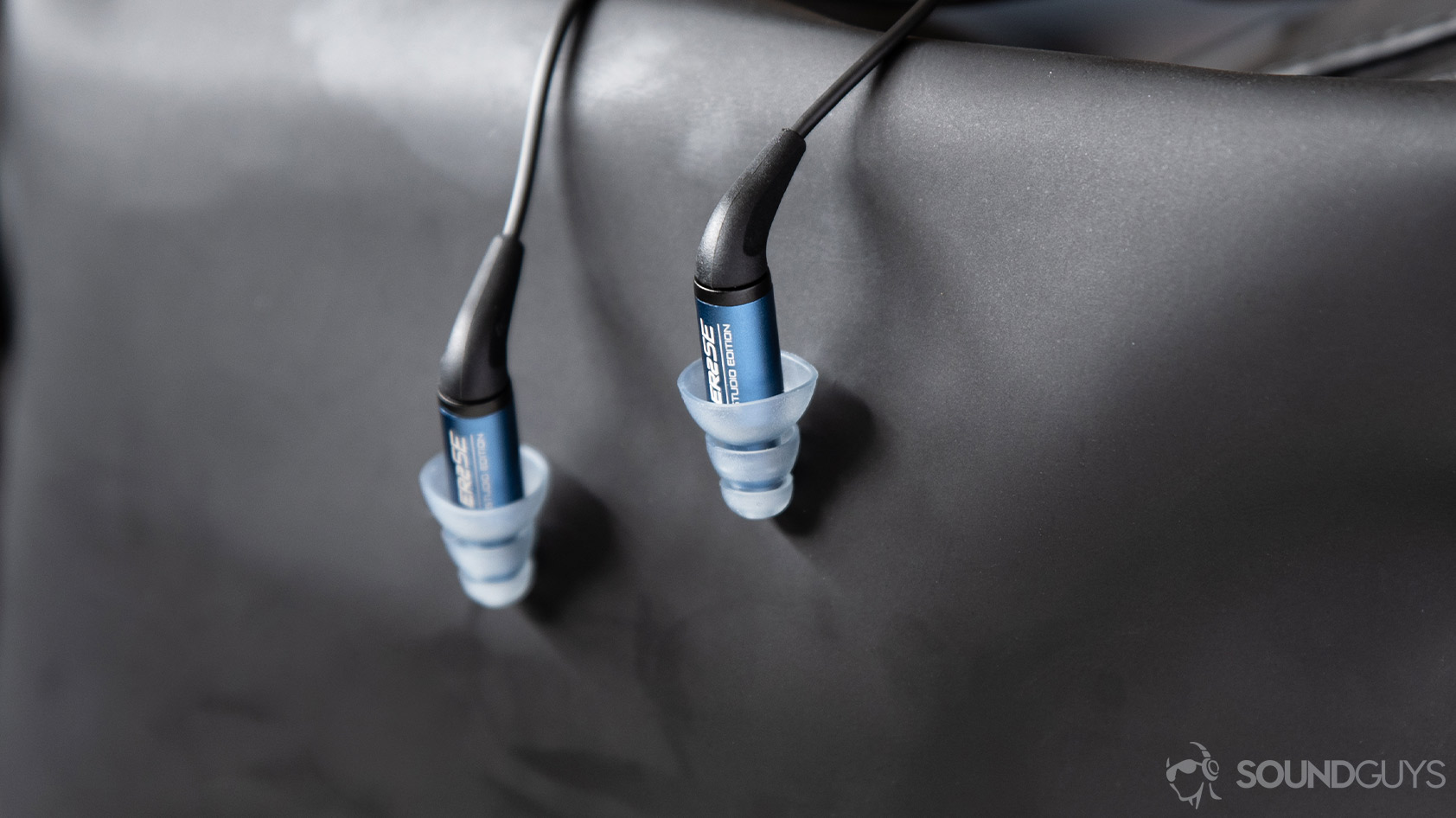
So first off let’s establish that basically anything you choose as an alternative will pretty much always cost more money. With that said, the Etymotic ER2SE has dropped significantly in price ($99 at Amazon). It boasts an easier-to-achieve fit and a similarly neutral leaning sound. The looks are more serious, and less cheerfully reminiscent of a do-it-yourself project.
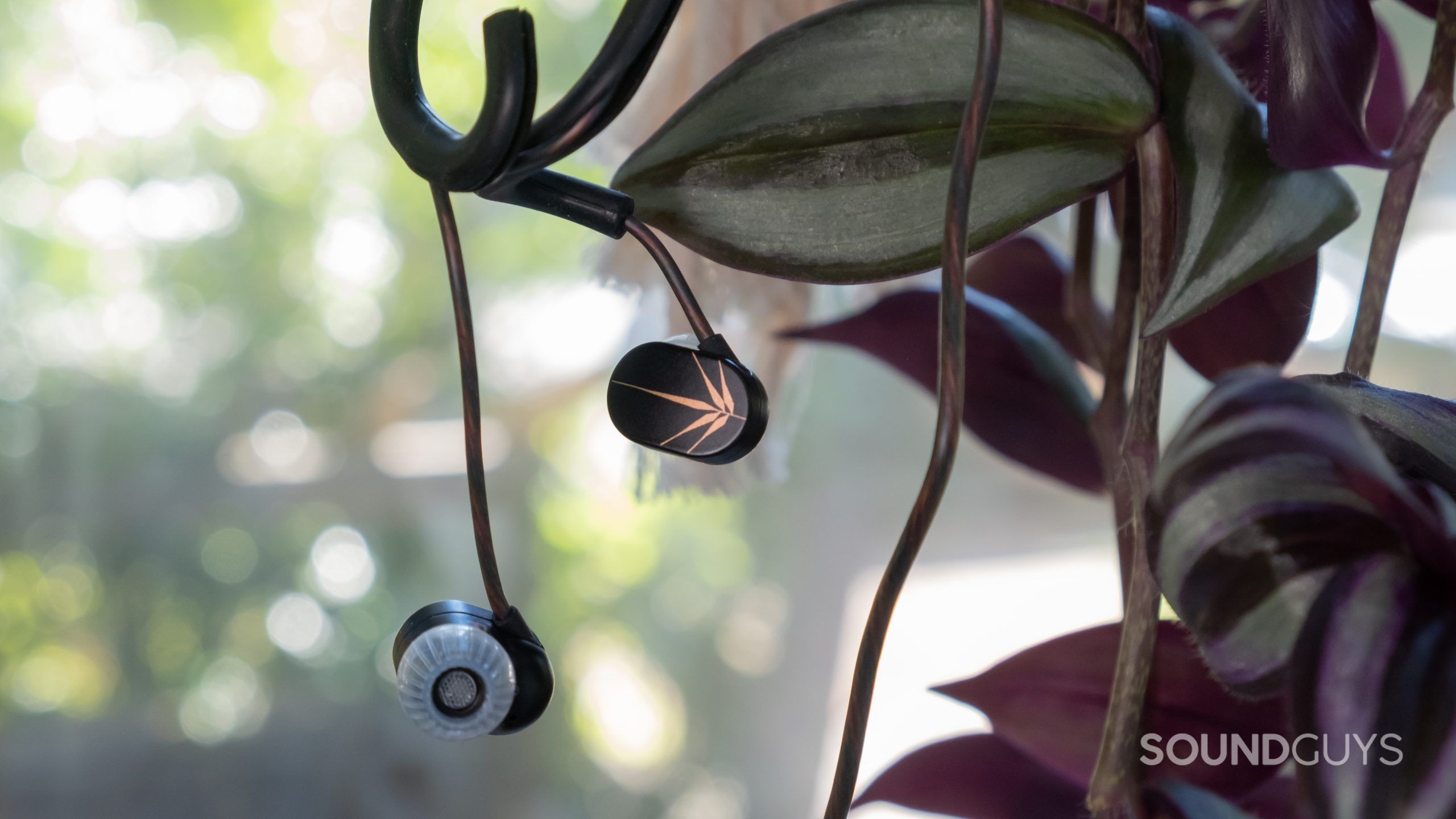
One of the few budget options to undercut the value proposition of the T2 is the Moondrop Chu retailing for merely $21 at Amazon. Like the TIN HiFi T2, the Moondrop Chu has metal earbud housings, although it is noticeably less clunky in shape, providing a better fit. You don’t get a removable cable, or memory foam ear tips with the Moondrop buds. However, the sound quality is excellent with more bass available than the T2.
A notably more refined offering from Moondrop are the Moondrop Aria ($79 at Amazon) and Moondrop Aria SE ($79 at Amazon). Both sets are more alike than dissimilar, with the Aria SE having a bass response more similar to the TIN HiFi T2, but otherwise they’re not that different in performance or experience. These both come with removable cables, a better fit than the TIN HiFi T2, and even a carry case.
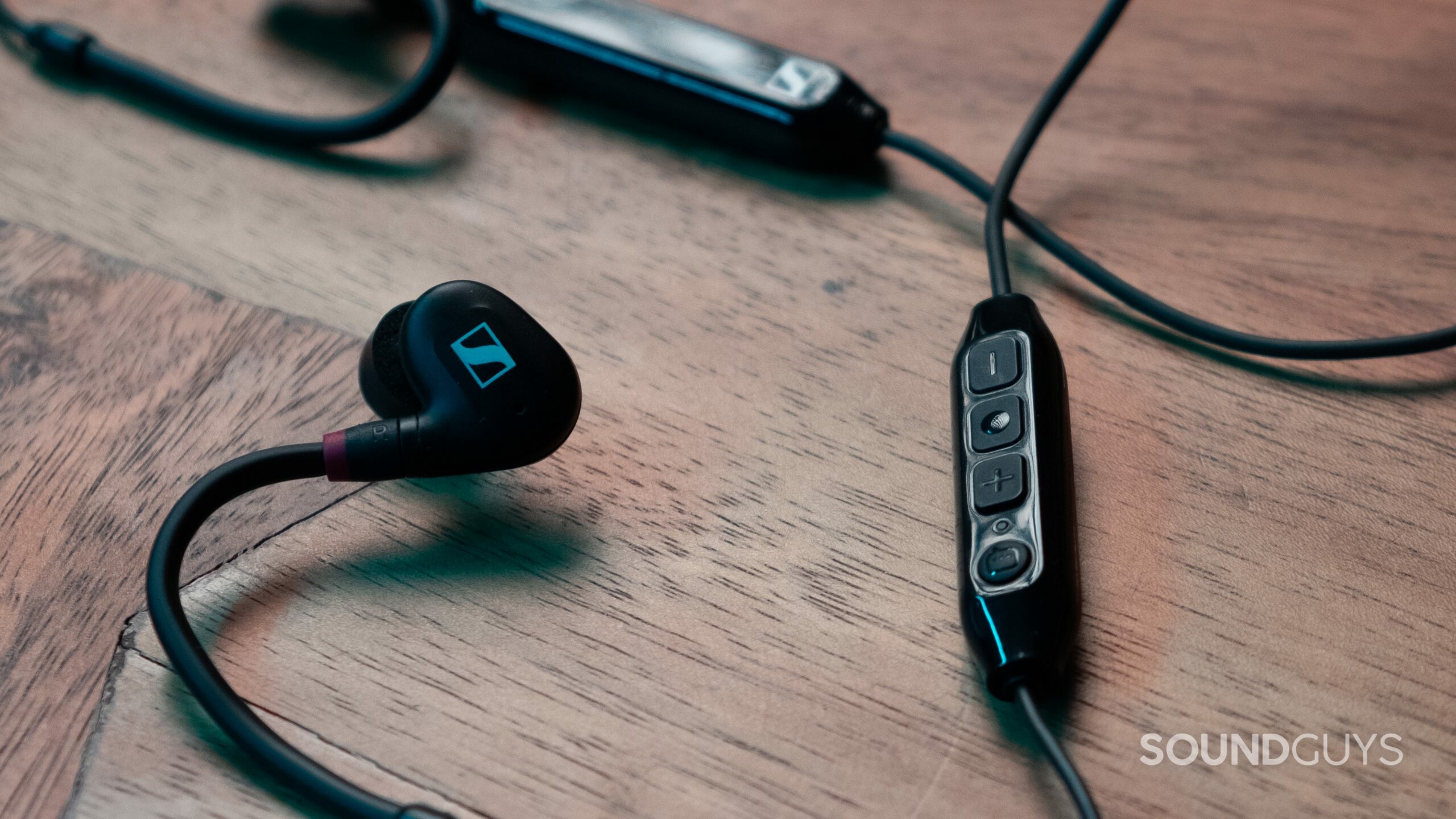
People looking for something with more flexibility, given that the TIN HiFi T2 is an audio-only affair, maybe you want a mic, or the option to go wirelessly. For that, try the Sennheiser IE 100 PRO. It sounds good, fits decently, has very good isolation, and lets you go wireless or wired. That you get Sennheiser quality for $149 at Amazon is a boon.
Frequently asked questions about the TIN HiFi T2
There are pros and cons to both. First off, not every audio device has Bluetooth capability. Similarly, not every device has a headphone jack, but most have workarounds these days in the form of dongles. Wired earbuds don’t need charging, and they can potentially last longer without risking batteries dying over time. Wired connections mean no headaches with pairing modes, and your audio quality is the best, especially if you have lossless files. Then again, cables are annoying if you go for a run. Consider these reasons to choose wired.
No, basically any device can drive the T2 sufficiently, so you don’t need a headphone amp.
The TIN HiFi T2 sensitivity is rated as sensitivity 102dB/mW, and they have an impedance of 16Ω.
Nope, the TIN HiFi T2 does not come with a microphone. It’s meant for just listening to music.
Thank you for being part of our community. Read our Comment Policy before posting.